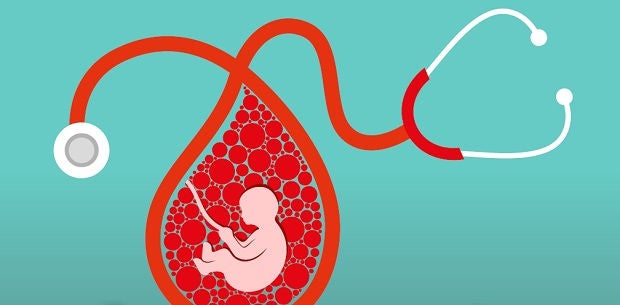
At the age of four months, Esmond Cheng was diagnosed with Severe Combined Immunodeficiency, a rare genetic disorder that causes infants to be highly susceptible to severe infections. Doctors advised that a bone marrow transplant was his only chance of survival, but Esmond’s parents were unfortunately not suitable matches for his transplant.
They then turned to the bone marrow and cord blood registries, where, much to their relief, a suitable cord blood transplant match was found in the inventory of Singapore Cord Blood Bank (SCBB) – Singapore’s only public cord blood bank. Today, the seven-year-old boy is healthy, thanks to cord blood donations.
Life-saving potential
Cord blood is the blood left in the umbilical cord and placenta after a baby is born and the cord is cut. It contains billions of stem cells that can be used to replace damaged bone marrow cells and restore the blood systems in patients with blood cancers, including leukaemia and immune deficiencies.
In Singapore, parents have the option of donating their baby’s cord blood for such lifesaving procedures, or banking it for private use. Since the blood is extracted after the cord is cut, the collection is non-invasive and completely painless for both mother and baby. If parents opt not to donate or bank the cord blood, it will simply be discarded after the child’s birth.

<<According to Professor
Aloysius Ho, Medical Director
of Singapore Cord Blood Bank,
the low number of donations is
due to a lack of awareness on
the benefits and limitations of
public cord blood donation.>>
“Annually, SCBB receives about 4,000 donated cord blood units. This makes up about 1 per cent of the total number of births in Singapore,” said Professor Aloysius Ho, Medical Director, SCBB.
This is hardly enough. Lymphoma and leukaemia are amongst the top 10 most common cancerrelated causes of death in Singapore, and most of the patients requesting to receive cord blood units from SCBB are adults with blood cancers. Every year, 40 to 60 per cent of patients in Singapore who need a haematopoietic stem cell transplant to survive are unable to find a suitable stem cell match from bone marrow donors and international public cord blood banks.
A ray of hope
One of the main reasons for the low number of donations is that expectant parents do not have complete information on the benefits and limitations of public cord blood donation and family cord blood banking before making their decision to donate or store for their family.
“Families who store their baby’s cord blood privately often do so thinking that it can be used for transplant needs within the family. However, most transplant physicians would not use a baby’s own cord blood to treat his or her hereditary, genetic or haematological diseases, such as leukaemia. Parents need to be aware that should their child develop leukaemia, the child’s stored cord blood may already contain premalignant cells and cannot be used to treat the child,” said Prof Ho.
The chance of a suitable match between the donor’s siblings and the donor’s cord blood is 25 per cent since each child inherits half of their genetic material from each parent. With more than 70 per cent of patients unable to find a match within their family members, many rely on public cord blood banks like SCBB and adult donor registries.
Urgent need
For unrelated recipients, cord blood transplantation has yielded good results. Over the past 15 years, SCBB has facilitated more than 270 transplants for life-threatening blood cancers and disorders both locally and internationally.
“Stem cells harvested from the umbilical cord blood are the earliest source of stem cells available and are at the most naïve state, which means that they have the most potential to mature into other cell types. They are unique and can overcome some of the limitations of adult stem cells from bone marrow. They are also easily adaptable and able to accept a higher level of mismatch due to its naivety,” Prof Ho said.
One key benefit of cord blood transplant versus bone marrow is the lower risk of graft-versus-host disease (GvHD), where the donor’s cells attack other healthy cells within the body.
Currently, there is an urgent need for cord blood donations, especially for Singaporeans and Asians. Finding these matches remains a challenge as the majority of stem cell registries are of Caucasian ancestry. With increased donations, many patients can benefit from the cord blood inventory, and recover from diseases and illnesses they may be suffering from.
To learn more about SCBB’s public donation and family cord blood banking services, please visit www.scbb.com.sg.













 Get it on Google Play
Get it on Google Play